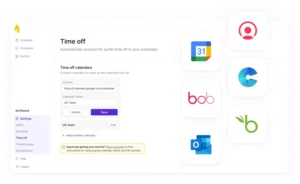
Maintaining a profitable support team during a downturn

With increasing reports of layoffs, less venture funding, a cost of living crisis and looming recession, companies are cutting costs and restructuring to adapt to changing circumstances. Profitable growth is the new aim, not growth at all costs. This means support teams are adjusting the way they work.
In this article, we set out how to maintain a profitable support team without reverting to outdated cost centre ways of working, namely a burn and churn model that doesn’t work for team members or customers.
Why does a profitable support team matter?
Decreasing cost to serve
One of the most important metrics that management teams will be tracking during a downturn is cost to serve. A high cost to serve impacts margins and makes the unit economics of running a business more expensive.
Take the example of an e-commerce company. If an item costs £20 and the gross margin is 40%, the company is left with £8. If a customer wants to exchange the item and has to speak to three different agents to complete the task (bringing the support cost to serve up to £2 or £3), that’s an additional 10-15% of margin that is eroded through an inefficient support team.
When analysing different options to reduce costs within a support team, it’s critical you don’t gravitate towards the lowest upfront cost without calculating the incremental additional costs when things go wrong. Often teams get this wrong when over-relying on outsourcing or specialising support queries too much. Analysing agent effort score and customer effort score is a good exercise to assess the friction that in turn increases costs.
Higher retention and customer satisfaction
A profitable support team provides better service that drives up customer satisfaction, retention and referrals. A cost centre support team does the bare minimum which results in customer problems not being sufficiently solved, a high customer effort score (high = bad), customer churn, lost revenue and high acquisition spend. A cost centre support team can be identified with bad reviews (Google, Trustpilot etc.) and overall poor customer sentiment.
In order to run a profitable support team, it’s important to evaluate beyond just return on investment. You might find cheaper locations to run your support from, or you might be able to cut training time to improve productivity, but will this impact service quality? If the answer is yes, you’ll need to measure how much longer it will take for a customer to get to resolution which will not only cost you more, it will also impact your top-line growth. Your marketing and sales teams will need to spend even more to offset the lack of organic growth and detrimental impact on your brand.
Principles of a profitable support team
- Hire and train the right people. A generalist model works best and so use that for as long as you can. You should hire people who can work across different channels (phone, live chat, email), and across different case topics. Routing your customers because you haven’t deployed the right model will cost you more (longer resolution time) and impact the customer experience.
- Deploy the right tools. You need to have the right internal orchestration tools. Cobbling together spreadsheets, Notion, Slack and calendars won’t cut it. Invest in orchestration so your team knows when they need to be available and what they need to work on. In the absence of this, your team will be wasting time trying to organise themselves instead of doing what matters, serving customers. The right orchestration tools will also ensure you have time scheduled for training and admin work.
- Deploy thoughtful automation. Automation can be very effective in context gathering and deflection but it shouldn’t fully replace human interaction. If a customer wants to speak to a human, let them. Your automation should recognise when phoning a customer will solve their problem faster instead of trying to avoid any interaction at all.
- Track the right metrics. Don’t just track the metrics that measure productivity, measure what matters to customers as well. You want some form of efficiency metric (tickets per hour) but you also want to be measuring customer effort score and agent effort score. These metrics will help you streamline your operation in a way that works for your team and budget without sacrificing the customer experience. Notable companies like Zappos don’t look at average handle time – it takes as long as it takes to solve a customer issue and it’s important they’re left with their problem fully resolved.
- Outsource only if you can handle it. Outsourcing can be attractive for a number of reasons. It can be cheaper (sometimes). You can scale a team up quickly without the ramp up times of hiring. And you avoid the management overhead needed to run a support team. If you are going to outsource you need to have the resources internally set up to onboard outsourced members of the team and ensure they constantly get re-trained to understand your product or service and fully solve customer problems.
The Surfboard checklist for a profit centre support team
Your support team is a profit centre if:
- Team members have autonomy to solve customer problems fully and go out of their way to enhance the customer experience to drive retention.
- Team performance and targets are measured in a holistic way beyond just ticket volumes.
- Team members are trained to solve a broad range of queries rather than having customers routed numerous times to solve a single issue.
- The support team inputs into the product roadmap identifying bug fixes and opportunities to improve the overall customer experience and drive more self-serve.
- Automation is used to to enhance team productivity and give your team more space to solve trickier problems rather than to replace your team entirely.
- You invest in properly training and re-training outsourcing agents.
Your support team is a cost centre if:
- Customer support sits in isolation to solve problems rather than improve the broader customer experience.
- Customer support has little interaction with other functions and sits completely separately to the wider organisation.
- Targets are extremely rigid and tied to ticket volumes rather than outcomes (first contact resolution, quality scores).
- Quality assurance is used for the sole purpose of managing agent performance rather than to identify product defects and improvements.
- Automation is used to replace and dehumanise your team. Your team is trained on a very narrow range of topics, not able to fully solve a customer problem without routing to other team members.
- You rely on outsourcing as a quick fix without investing in training external partners.
Want to hear more about developing a profitable support team? Get in touch below.



